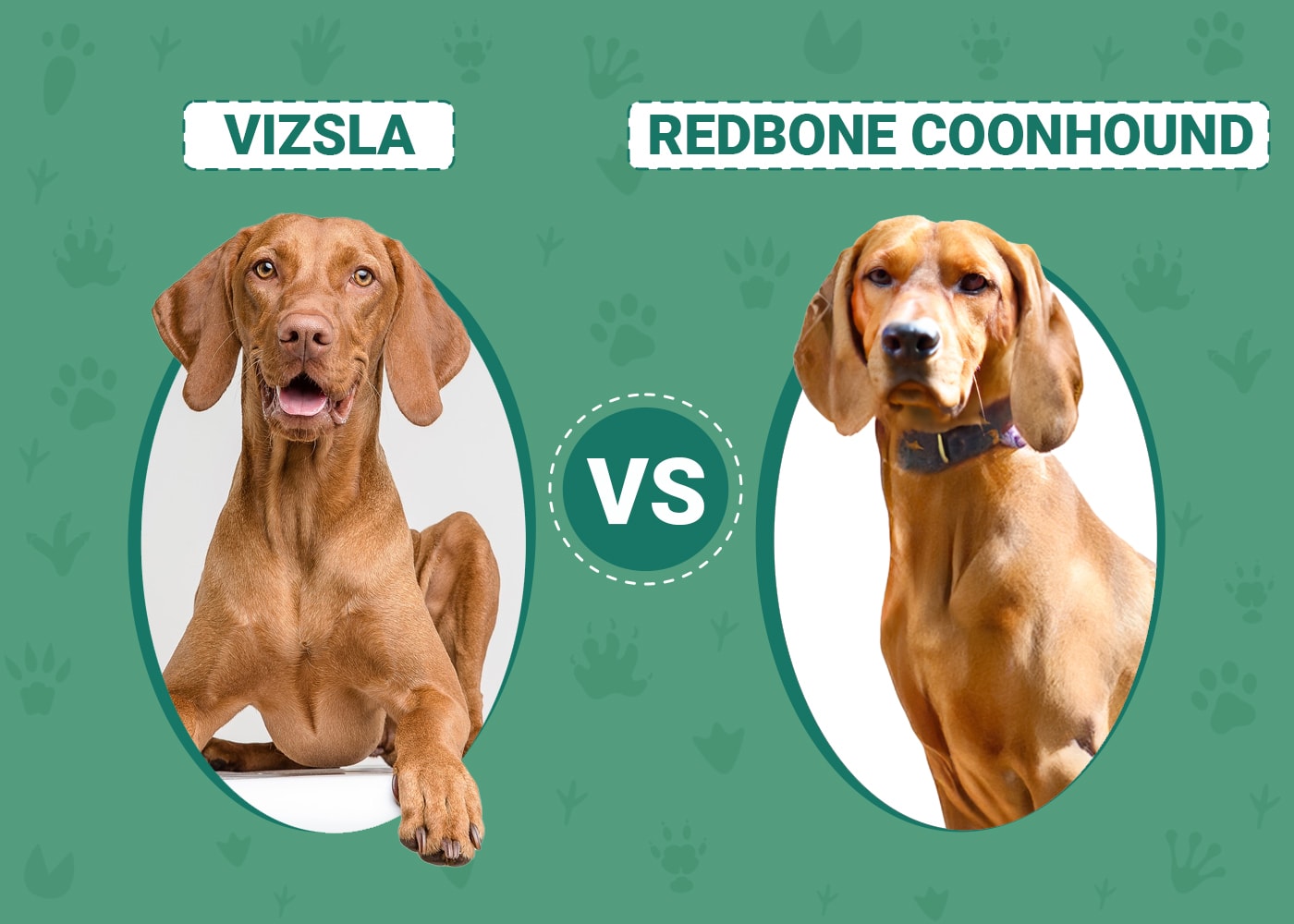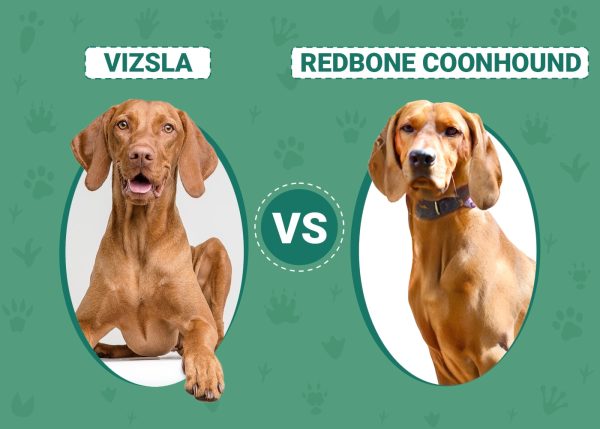Click to Skip Ahead
While Vizsla and Redbone Coonhounds are extremely similar, there are some slight differences between them. These differences can determine which dog is better for specific families. Therefore, learning about each breed is important before deciding which one to adopt.
This article will examine each canine, helping you decide which option is best for your family.
Visual Differences
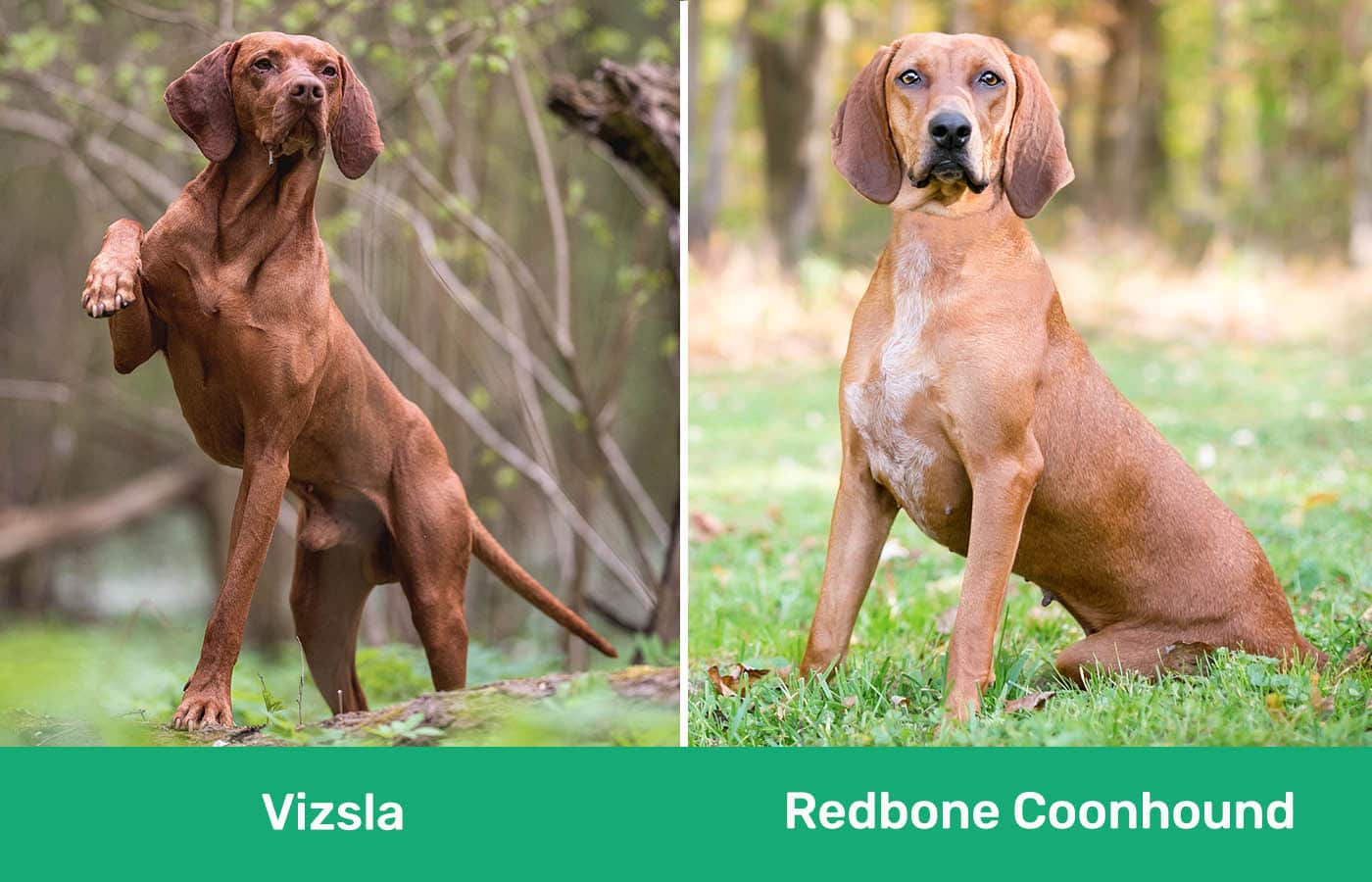
At a Glance
- Average height (adult): 21–24 inches (male), 20–23 inches (female)
- Average weight (adult): 45–65 pounds (male), 40–55 pounds (female)
- Lifespan: 10–14 years
- Exercise: High
- Grooming needs: Minimal
- Family-friendly: Yes
- Other pet-friendly: Sometimes
- Trainability: Intelligent, eager to please
- Average height (adult): 22–27 inches (male), 21–26 inches (female)
- Average weight (adult): 45–70 pounds (male), 45–70 pounds (female)
- Lifespan: 11–12 years
- Exercise: Moderate to High
- Grooming needs: Minimal
- Family-friendly: Yes
- Other pet-friendly: Sometimes
- Trainability: Intelligent, friendly
 Vizsla Overview
Vizsla Overview
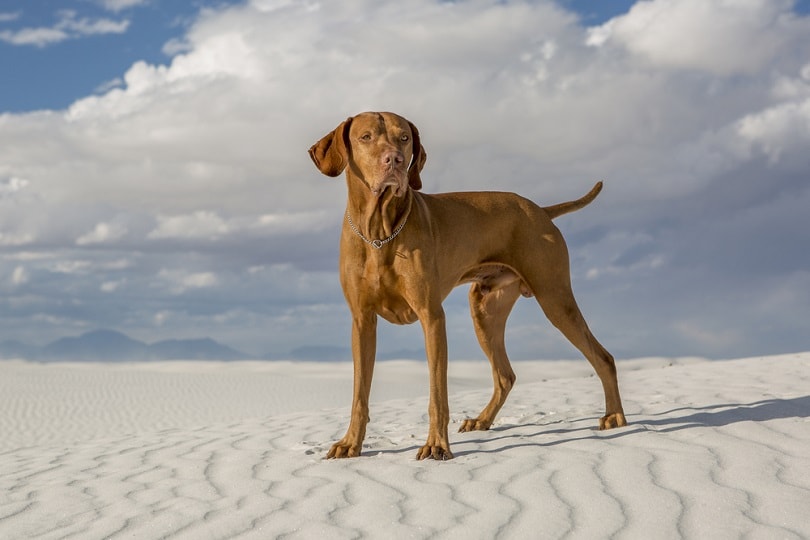
Temperament
The Vizsla is known for its affectionate and friendly nature, making it an excellent companion and family pet. They are highly devoted to their owners and thrive on human companionship. Vizslas are often called “Velcro dogs” because they love to be by their owner’s side and are known to form strong bonds with their families.
They are gentle and patient, making them suitable for households with children. However, their vitality and energy levels may be too much for young children, so supervision is recommended during interactions.
Vizslas are also generally good with other dogs and can coexist peacefully when properly socialized from a young age.
Training
Vizslas are intelligent and eager to please, which makes them highly trainable. They have a natural desire to work and are quick learners. This breed excels in various canine sports and activities, including obedience, agility, and hunting.
Positive reinforcement methods, such as treats, praise, and consistency, work best for training Vizslas. Harsh or heavy-handed training techniques should be avoided as they can affect their sensitive temperament. Early socialization and consistent training are essential to mold their behavior and prevent potential behavior issues.
For this reason, we highly recommend getting them in early puppy classes at an early age. These classes provide socialization and training, two things these dogs need.
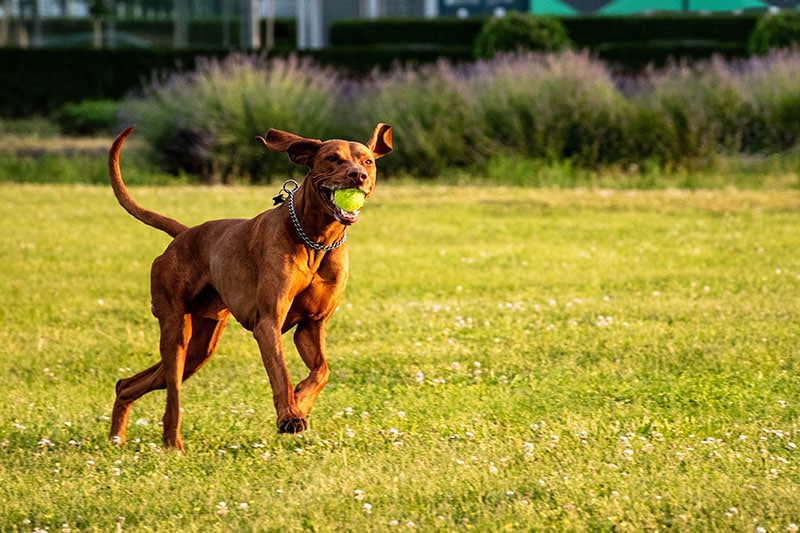
Health & Care
The Vizsla is generally a healthy breed with a lifespan of 10 to 14 years. However, like all dog breeds, they are prone to certain health conditions. Some health issues affecting Vizslas include hip dysplasia, epilepsy, allergies, and certain eye conditions.
Regular veterinary check-ups, a balanced diet, and providing them with regular exercise are important for their overall well-being.
Vizslas have a short and smooth coat that requires minimal grooming. Weekly brushing will help to remove loose hair and keep their coat healthy and shiny. Bathing should only be done when necessary to avoid drying out their skin. Regular nail trimming, teeth brushing, and ear cleaning are also part of their basic grooming routine.
Mostly, these dogs do not require significant grooming compared to other breeds, and they have one of the lowest care needs of all dog breeds.
Suitable For:
These active, family-oriented dogs work well with just about any family. However, we particularly recommend them for those who are more active, as they need a lot of exercise.
Redbone Coonhound

Temperament
These dogs are known for being friendly and gentle. Therefore, they work well for families. They’re often very affectionate and loyal and eager to please their owners. They’re pretty mellow dogs and get along with just about anyone.
Because they’re very mellow and a good choice for families with children.
They are also generally good with other dogs and can coexist peacefully when properly socialized from a young age. However, it’s important to note that smaller animals may trigger their strong hunting instinct, so supervision and proper introductions are crucial. We don’t recommend leaving them alone with cats.
Exercise
These canines are hunting dogs, so they are decently energetic. They require at least moderate exercise, though many of them do need significant amounts (especially as puppies). They love to be outdoors and active. Therefore, they work best for more active families that do plenty of exercise themselves.
Be sure to provide them with regular opportunities for exercise throughout the day. Getting them outside often helps keep them from being too energetic around the house, often leading to misbehaving.
Redbone Coonhounds do like just about any activity. However, they love activities that tap into their natural hunting instincts, like scent games or tracking exercises.
Training
These dogs are eager to please and quite intelligent. They can be independent, though, and they’re just like most other hounds. They are somewhat easy to train, but they may not always listen to those commands in a real-world setting.
Early socialization and obedience training can be helpful, and it helps the breed maintain their good manners and may help counteract some of their stubbornness.
As with any hound breed, it’s important to note that they may tend to follow their nose, so training them to have a reliable recall is crucial for their safety. You shouldn’t purposefully let them run off-leash, as they listen to their nose more than their owners.
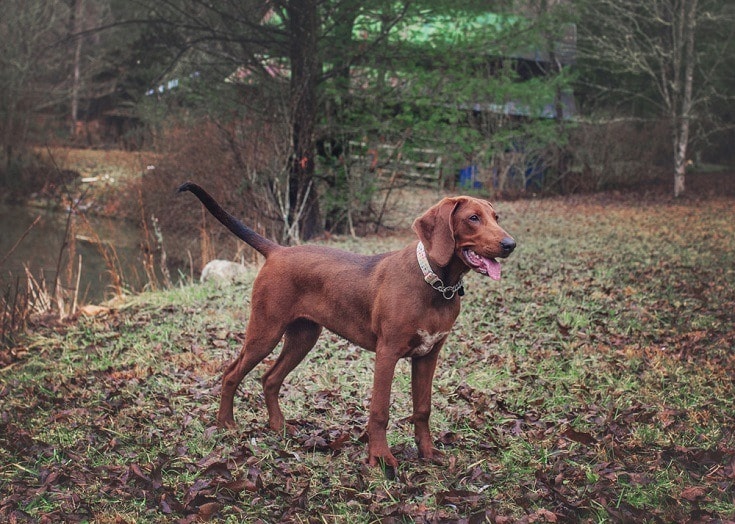
Health & Care
The Redbone Coonhound is generally a healthy breed with a lifespan of around 11 to 12 years. However, like all dog breeds, they may be prone to certain health conditions. Some health issues affecting Redbone Coonhounds include hip dysplasia, ear infections (due to their long, floppy ears), and obesity.
You should take them to the vet regularly, as this helps catch potential illnesses sooner rather than later. They also need a balanced diet and plenty of exercise to maintain their overall health. Their short coat requires very little grooming, and weekly brushings are plenty to help keep them clean.
Of course, you’ll also have to trim their nails and brush their teeth. However, this is true for all dogs.
Suitable For:
These hunting dogs are often still purpose-trained. Therefore, they work well for hunters and function well for hunting dogs. However, they also work well for dogs looking for a more mellow hound that can also keep up with the kids.
Which Breed Is Right for You?
Both breeds have unique characteristics and needs. You should choose the one that works best for your family. Both dogs are extremely active, though the Vizsla is often more active than the Redbone Coonhound. However, Vizslas are easier to train and less stubborn.
Redbone Coonhounds work great for kids and tend to be more laid back. Neither breed needs tons of grooming, though. Both breeds have specific health concerns, and awareness of potential issues is essential. The Vizsla may be prone to hip dysplasia and certain eye conditions, while the Redbone Coonhound may predispose to hip dysplasia and ear infections.
In the end, they’re quite similar. However, the difference in temperament is often enough for owners to prefer one dog over the other.
See Also:
- How to Get Rid of Turtle and Tortoise Odor (3 Ideas & Tips)
- Do Turtles Make Good Pets? What You Need to Know!
Featured Image Credit: (T) Cole Wyland, Unsplash | (B) Gerald Peplow, Shutterstock

